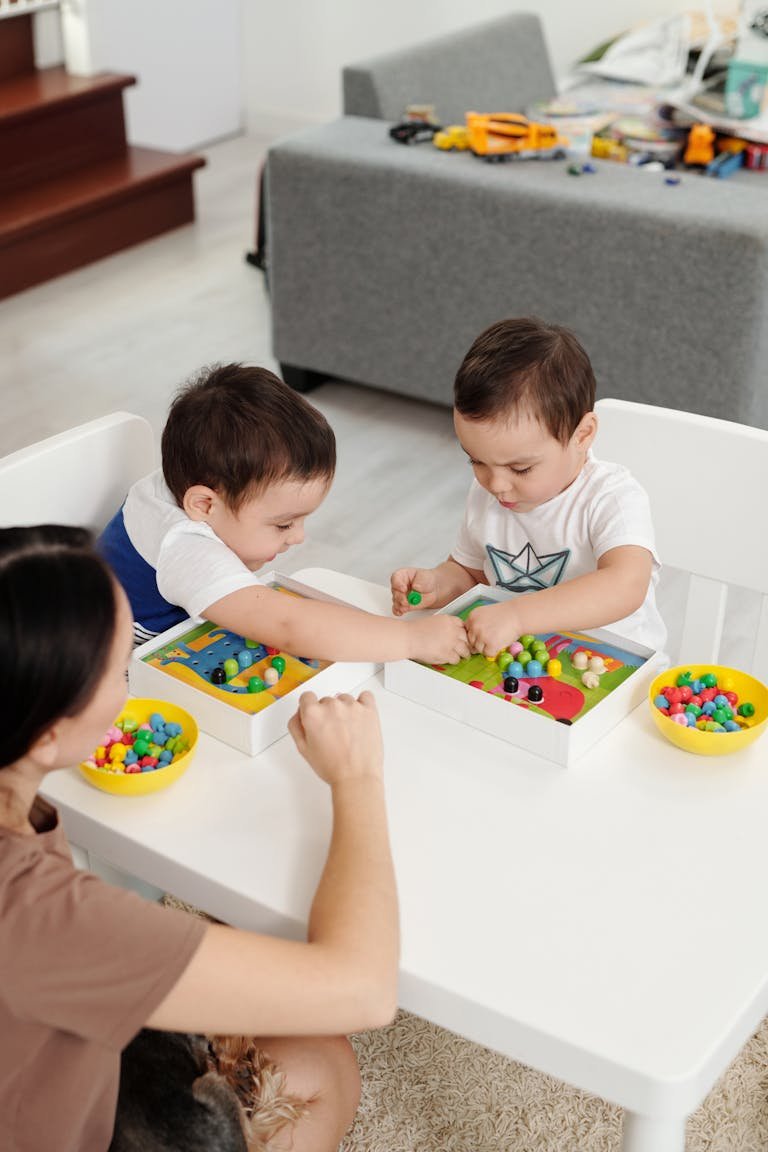
Encouraging Spontaneous Speech in Autistic Children: 5 Key Strategies
For many parents and therapists, one of the biggest goals in language development for autistic children is fostering spontaneous speech—helping children express their needs, wants, and ideas without relying solely on prompts or direct questions.
Every child’s communication journey is unique, but there are proven strategies that can encourage natural language development. Below are five effective ways to support autistic children in learning to speak more spontaneously.
1. Focus on the Child’s Interests
Children learn best when they’re motivated. Pay attention to their favorite toys, activities, and snacks, and use them as opportunities to build language. If a child loves trains, introduce words like “train,” “fast,” “track,” or “go.” If they enjoy a certain snack, start with words like “cookie,” “juice,” or “more.”
To make learning even more engaging, check out our interactive toys and flashcards designed to enhance language skills through play. These tools make it easier for children to connect words with their favorite activities.
2. Utilize Sounds They Can Already Make
Encourage speech by choosing words that contain sounds your child can already produce. This reduces frustration and boosts confidence. For example, if they can say “pa,” introduce words like “popcorn,” “papa,” or “panda.” (Check our First Words Tracker)
Our early speech development toys are specially designed to help children build on familiar sounds through fun, interactive play. Browse our store for tools that support phonemic awareness and articulation practice.
3. Teach High-Frequency Words
Words that are useful across different settings—such as home, school, or therapy—are incredibly valuable. Functional words like “yes,” “no,” “help,” “more,” and “done” empower children to communicate in everyday situations.
Using visual communication cards (like this one) can reinforce these essential words and provide extra support for children still developing verbal speech. Check out our selection to find the best tools for your child. ( Store access)
4. Build on Non-Verbal Communication
Many autistic children naturally communicate through gestures, facial expressions, or actions before they use words. Pay close attention to these cues and introduce matching words. For instance, if your child pulls you toward the fridge for a snack, model words like “eat,” “fruit,” or “open.”
Pairing speech with communication boards and AAC devices can be incredibly helpful. Explore our collection of speech and language tools to support your child’s individual needs.
5. Incorporate Action Words
Verbs are essential for helping children make requests and engage in interactive communication. Teaching words like “jump,” “open,” “push,” “help,” or “throw” encourages children to express themselves more effectively.
Our cause-and-effect toys and interactive play sets are perfect for reinforcing action words in a fun and engaging way. These products help children practice language naturally while playing.
Additional Tips for Success
- Use gestures and visual supports. Pairing words with signs, pictures, or objects enhances understanding and retention.
- Model language consistently. Repeat words in meaningful contexts and use expressive tones to make communication exciting.
- Be patient and celebrate progress. Every attempt to communicate—verbal or non-verbal—is a step forward. Praise all efforts to boost confidence and motivation.
Creating a language-rich environment tailored to your child’s interests and abilities can make a significant difference in their communication journey. Explore our carefully curated selection of speech and language tools to support your child’s progress. Visit our store today to find the best resources for fostering spontaneous speech!
Always consult with professionals and explore additional resources to find the best approach for your child.






